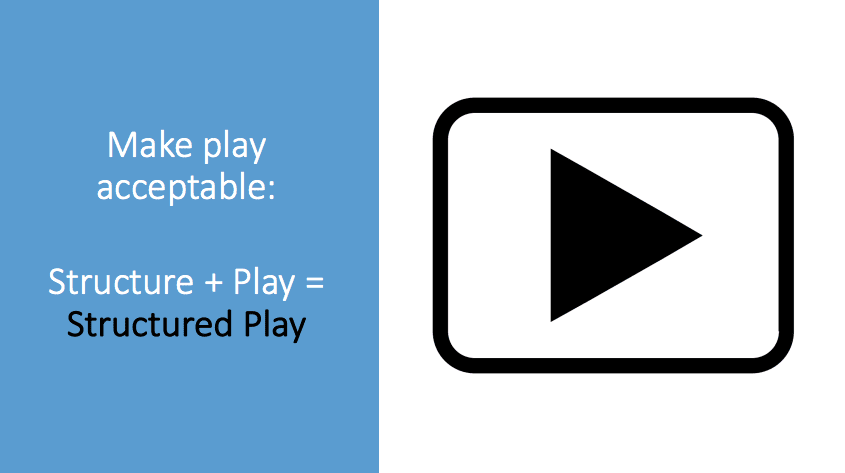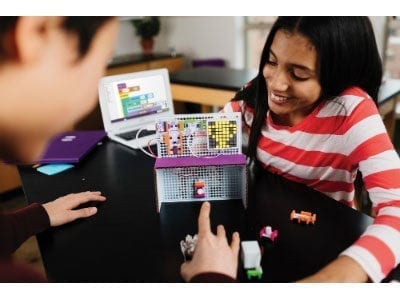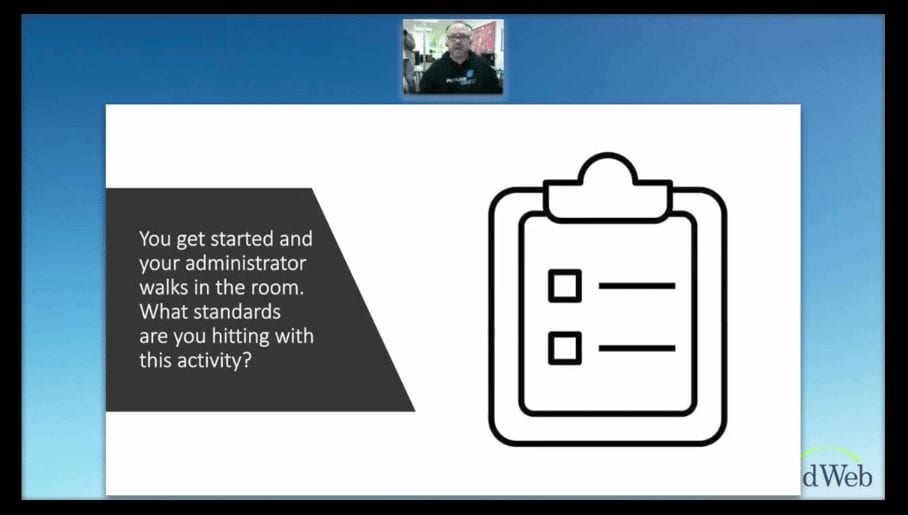Tips and Tricks for Coding and STEAM in the Classroom

For more creativity, exploration, and freedom, educators can incorporate play into their coding and STEAM lessons. “Why is play a forbidden word in education today?” Jon asked. Play can instead be structured for learning, which builds relationships, benefitting all involved. Rather than the teacher being the “master” of the class, different exercises can allow teachers to learn along with the students. Relationships can be built if teachers take a step back and show students they are not afraid to fail.
Working together during lessons is key. By working in small groups or pairs, students can build their communication and collaboration skills, and formulate ideas with each other. Collaboration also helps students learn to ask each other questions, rather than looking towards the front of the classroom. Jon mentioned that having students design exercises could even be an exercise in and of itself. For example, students can design obstacle courses for coding and STEAM exercises using cardboard boxes, tongue depressors, PVC pipe, and butcher paper.
Jon also noted that coding and STEAM exercises incorporate many soft skills that are equally as important today. Resilience, creativity, and perseverance are all skills that students learn through these tasks that are valued in the workplace. Within the school environment, makerspaces can also help engage those new to coding by combining coding with a physical environment and giving it structure. Ultimately, “digital and physical combined can be magic,” said Jon, and there are opportunities to engage everyone with coding and STEAM.
This broadcast was hosted by edWeb.net and sponsored by littleBits Education.
This article was modified and published by eSchool News.
About the Presenter
Jon Samuelson currently works as an innovation strategist for the Beaverton School District in Beaverton, OR. Creator of the Techandia Podcast, he has been an educator for over 20 years. He has presented and keynoted at conferences around the United States, sharing his love of learning and educational technology, and constantly strives to learn and share ideas with educators.
Join the Community
STEM Learning: Full STEAM Ahead is a free professional learning community that provides educators, curriculum leaders, and industry members with a place to collaborate on bringing more science, technology, engineering, and mathematics into the classroom.
littleBits makes technology kits that are fun, easy-to-use, and infinitely creative. The kits are composed of electronic building blocks that are color-coded, magnetic, and make complex technology simple and fun. Together they’re interchangeable in millions of different ways to empower kids to invent anything – from a sibling alarm, to a wireless robot, to a digital instrument.





Comments are closed.